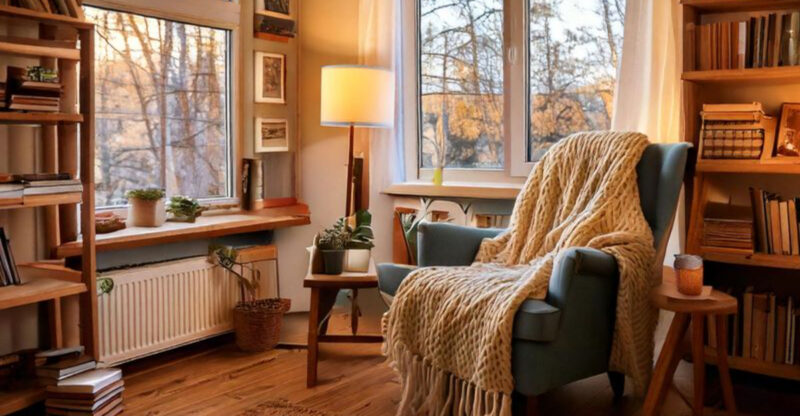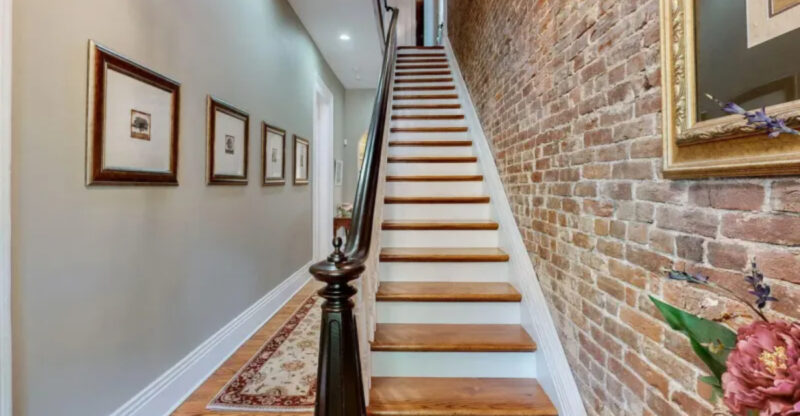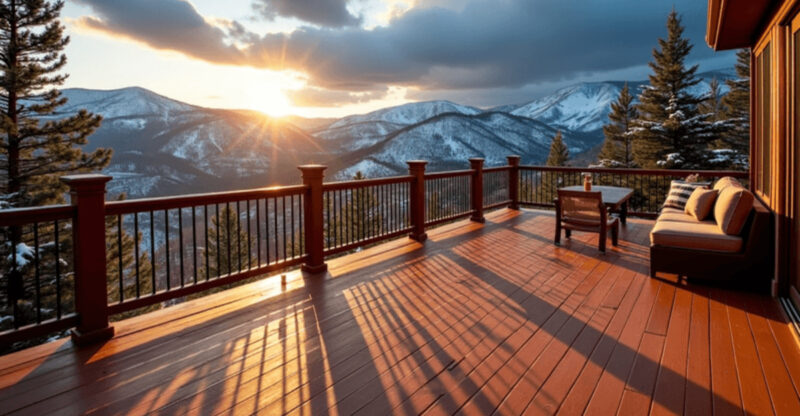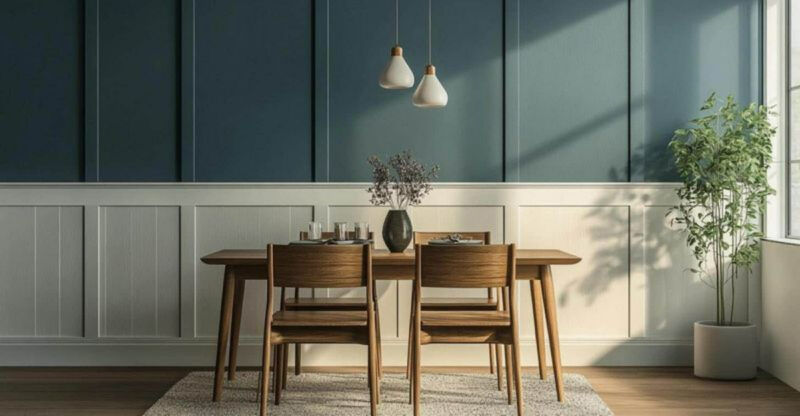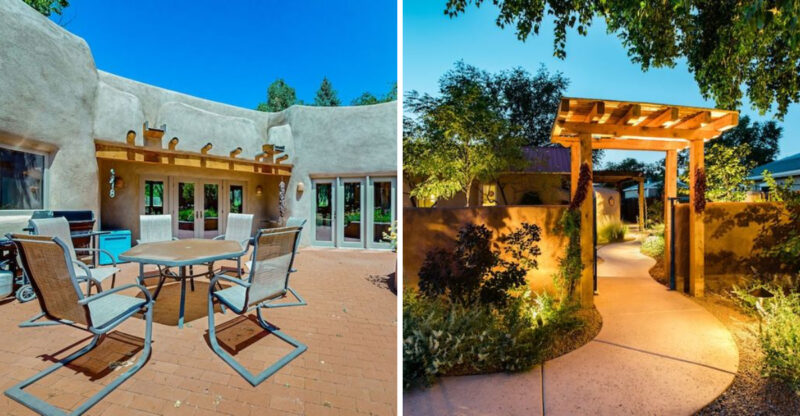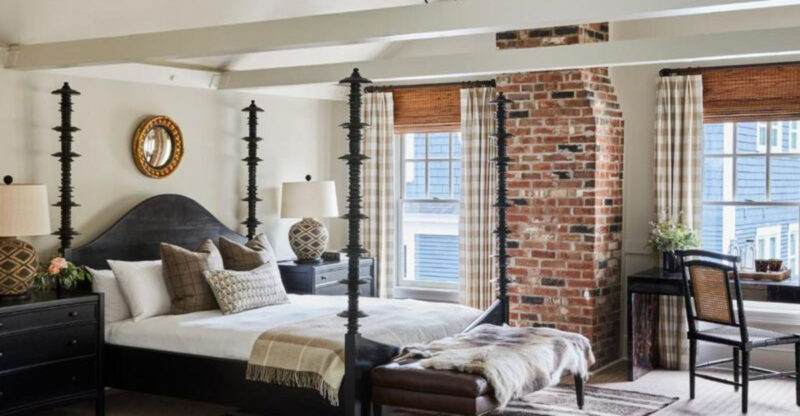14 Design Elements In Oklahoma City Homes That Could Be Gone By 2030
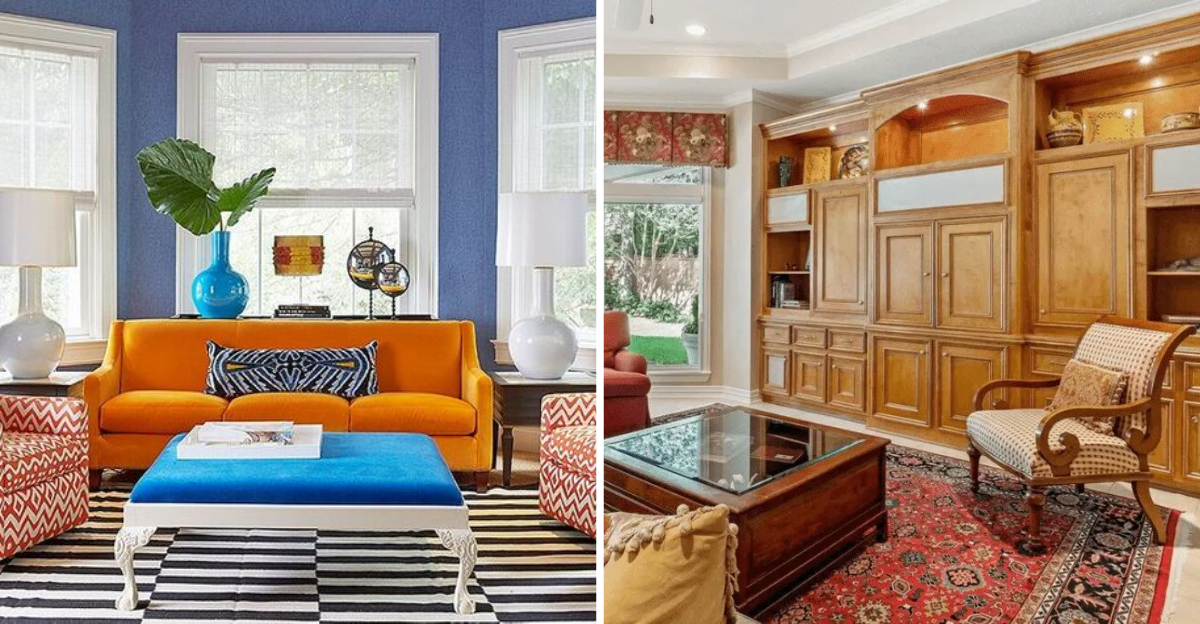
Oklahoma City homes have seen countless design trends come and go over the decades. As we approach 2030, many familiar interior elements that once dominated local homes are rapidly falling out of favor.
Homeowners are increasingly seeking cleaner, more functional spaces that reflect modern sensibilities rather than dated design choices.
Here’s a look at 14 home design elements that might disappear from OKC homes in the next few years. These trends are based on current design shifts, though personal preferences and regional influences may impact the longevity of certain elements.
1. Heavy Crown Molding
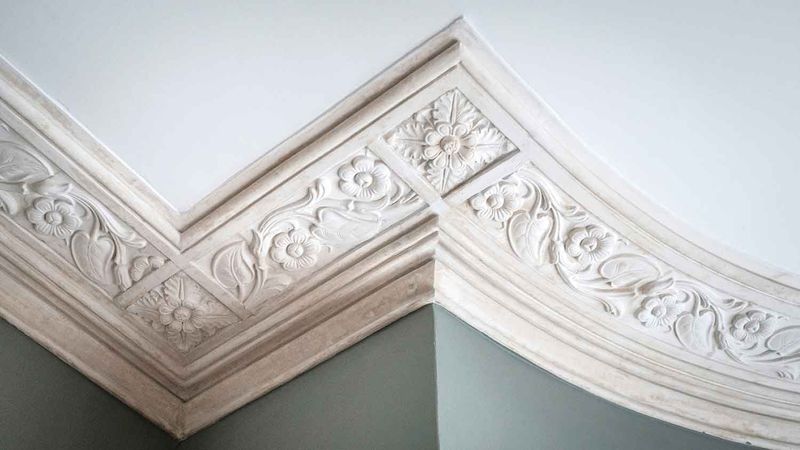
Remember when elaborate crown molding signaled luxury in Oklahoma City homes? Those days are numbered. Modern homeowners are increasingly favoring clean lines and minimalist aesthetics that make rooms feel larger and more open.
Intricate crown molding requires significant maintenance, collecting dust in our prairie climate and often yellowing with age. Plus, the formal, traditional look clashes with the casual, flexible living spaces most families now prefer.
Simpler, more subtle trim options are taking over, with many new builds skipping crown molding altogether. The shift reflects a broader move toward practical design that emphasizes natural light and spatial flow rather than ornate architectural details.
2. Faux Wood Paneling
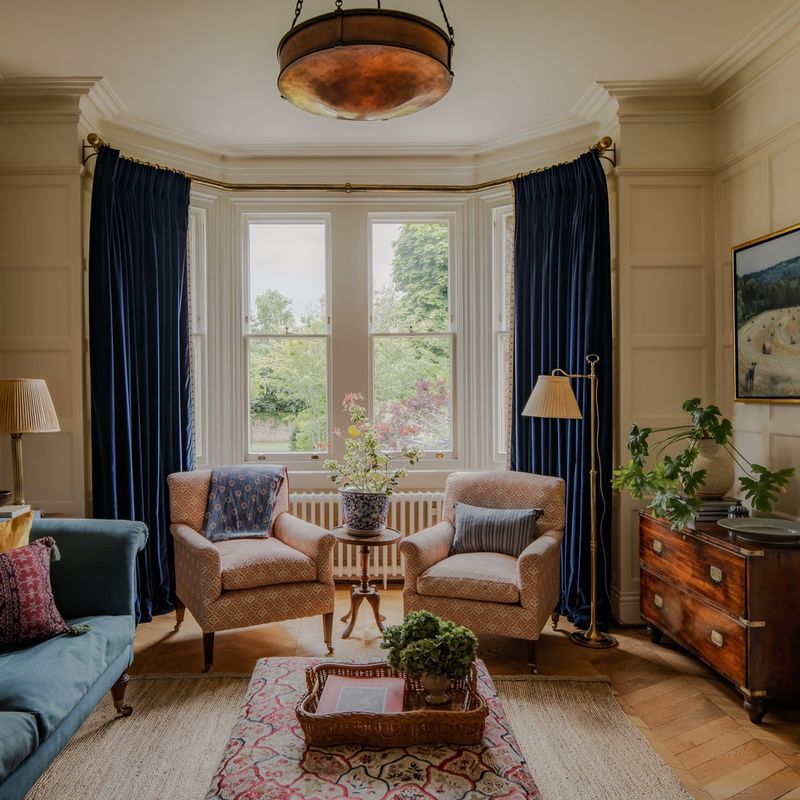
Those dark, glossy wood-look panels that covered countless Oklahoma City basement and den walls are rapidly disappearing. Once considered the height of masculine sophistication in the 1970s, faux wood paneling creates a cave-like atmosphere that modern homeowners find oppressive.
The material itself hasn’t aged well either. Many panels have warped, faded unevenly, or developed strange patinas over decades of Oklahoma’s humidity fluctuations. Homebuyers now view these panels as an immediate renovation project rather than a charming vintage feature.
Bright, textured walls with actual wood accents are replacing this dated look. Even in home offices and media rooms, lighter finishes that don’t absorb all available light are strongly preferred by today’s design-conscious Oklahomans.
3. Wall-to-Wall Carpeting

Wall-to-wall carpeting is rapidly losing ground in Oklahoma City homes. The plush beige expanses that once dominated local housing are being torn out in favor of hardwood, luxury vinyl plank, and tile flooring options that better withstand our red dirt and seasonal allergens.
Homeowners have grown weary of the maintenance challenges. Oklahoma’s dust storms and high pollen counts mean carpets require constant cleaning, and they never quite look fresh after a few years. Young families particularly dislike how carpeting traps spills, pet accidents, and odors.
The shift also reflects changing aesthetics. Modern Oklahoma homeowners prefer the clean, versatile look of hard surfaces with strategic area rugs that can be easily changed or cleaned when design preferences or seasons shift.
4. Overly Ornate Light Fixtures
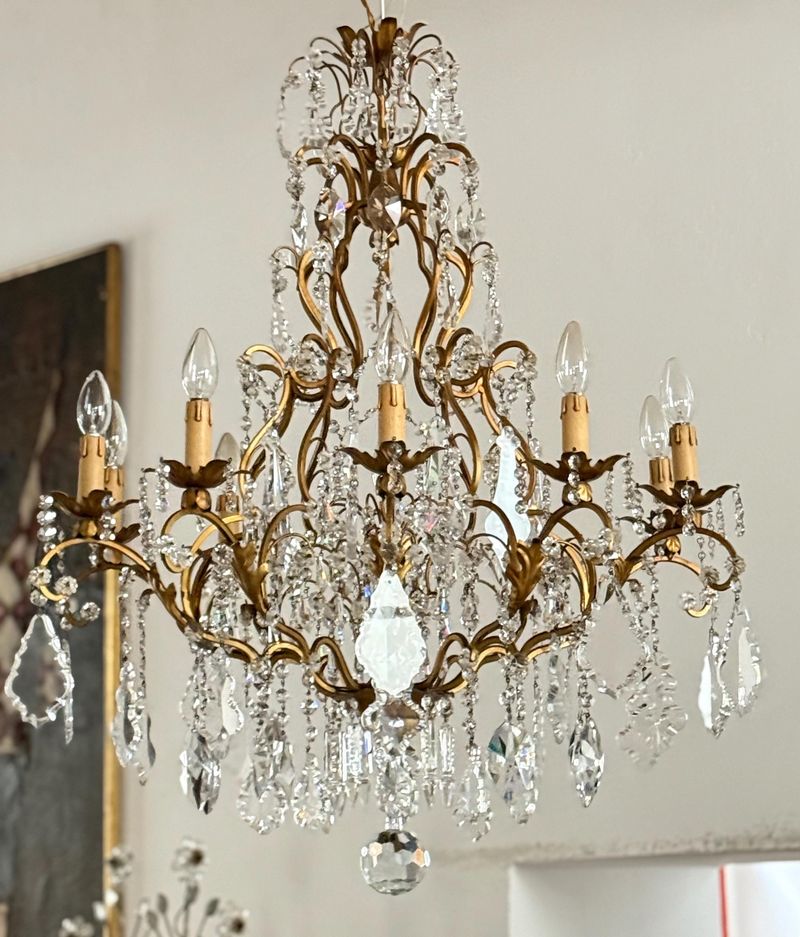
Giant crystal chandeliers and faux-Tuscan bronze monstrosities are quickly vanishing from Oklahoma City homes. These oversized statement pieces, once status symbols in local dining rooms and entryways, now read as ostentatious and impractical in our increasingly casual lifestyles.
Maintenance is a major factor driving this change. Oklahoma’s infamous dust means elaborate fixtures require frequent, difficult cleaning. The dated finishes particularly the ubiquitous oil-rubbed bronze that dominated early 2000s homes clash with contemporary design preferences.
In their place, we’re seeing sleek, architectural lighting with clean lines and mixed materials. Oklahoma homeowners are embracing fixtures that provide better illumination with less visual weight, allowing other design elements to shine without competing with an overpowering light fixture.
5. Tuscan-Style Kitchens
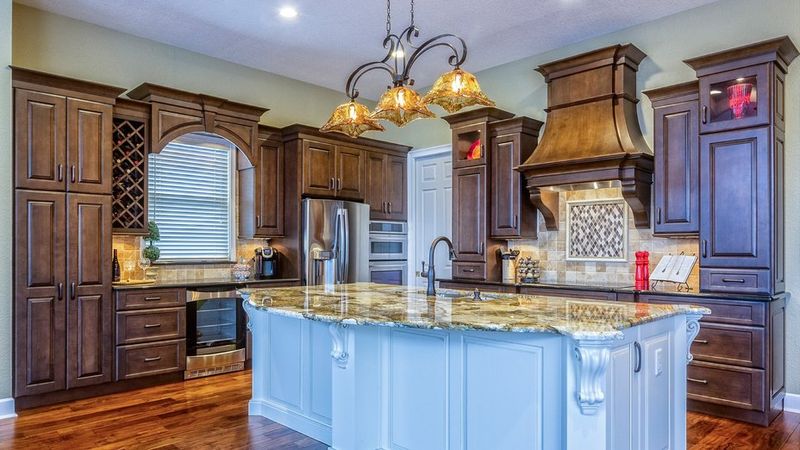
The faux-Mediterranean kitchen that dominated Oklahoma City’s housing boom in the early 2000s is rapidly becoming extinct. Those dark cherry cabinets, black granite, and tumbled stone backsplashes created a heavy, artificial Old World aesthetic that feels increasingly dated.
Oklahoma homeowners have discovered these kitchens are impractically dark for our climate. The region’s strong natural light creates stark contrasts in these spaces, making them feel gloomy rather than cozy. The elaborate scrollwork and ornate details also collect Oklahoma’s notorious red dust.
Today’s local kitchens embrace lighter woods, brighter surfaces, and cleaner lines that reflect our casual, family-centered lifestyle. The move away from faux-Tuscan represents a broader shift toward authenticity in home design, with Oklahoma homeowners preferring spaces that feel genuine rather than theatrical.
6. All-Granite Countertops
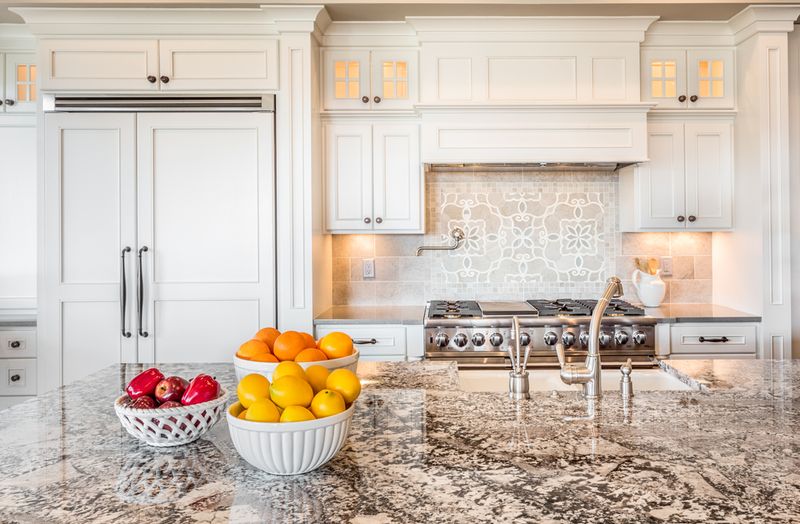
Granite countertops, once the undisputed king of Oklahoma City kitchen upgrades, are steadily losing their crown. The speckled, busy patterns that dominated local homes for decades are increasingly viewed as dated rather than luxurious by design-conscious homeowners.
The material itself presents practical challenges in our climate. Oklahoma’s hard water leaves stubborn spots on darker granites, while the porous nature of some varieties requires regular resealing to prevent staining. Many homeowners have grown tired of the maintenance requirements.
Quartz, concrete, and butcher block alternatives are gaining popularity for their cleaner appearance and easier upkeep. The shift reflects broader design trends toward simplicity and functionality, with Oklahoma City residents increasingly prioritizing materials that support their lifestyle rather than simply signaling status.
7. Faux Stone Finishes
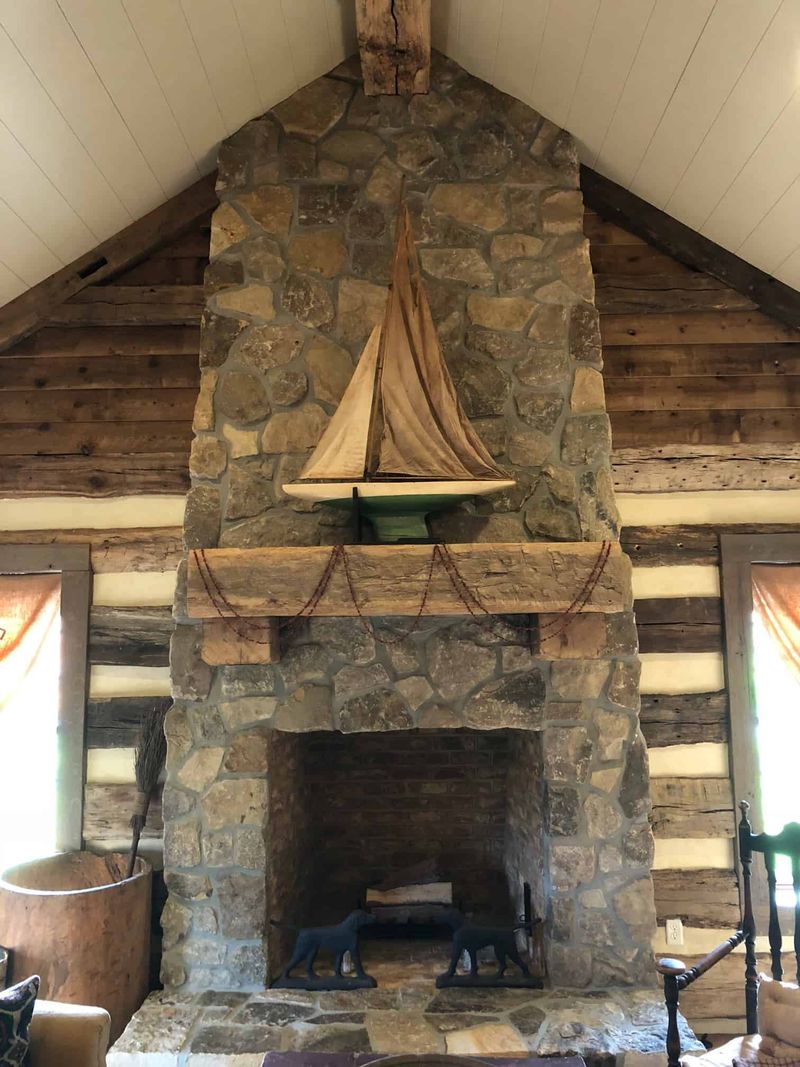
Artificial stone veneer is rapidly disappearing from Oklahoma City homes, both inside and out. Those faux-rock fireplaces and exterior accents that dominated new construction in the early 2000s have not aged gracefully in our extreme climate.
Oklahoma’s dramatic temperature swings cause these veneers to crack and separate over time. The telltale repeating patterns have become easily recognizable as fake, making homes look dated rather than upscale. Many local homeowners report feeling embarrassed by these obviously artificial surfaces.
Natural materials or honest alternatives are taking their place. Authentic brick, locally-sourced stone, or clean contemporary surfaces are preferred for their genuine character and durability. This shift reflects a broader trend toward authenticity in Oklahoma City home design, with residents seeking materials that honestly reflect their true nature.
8. Overly Themed Rooms
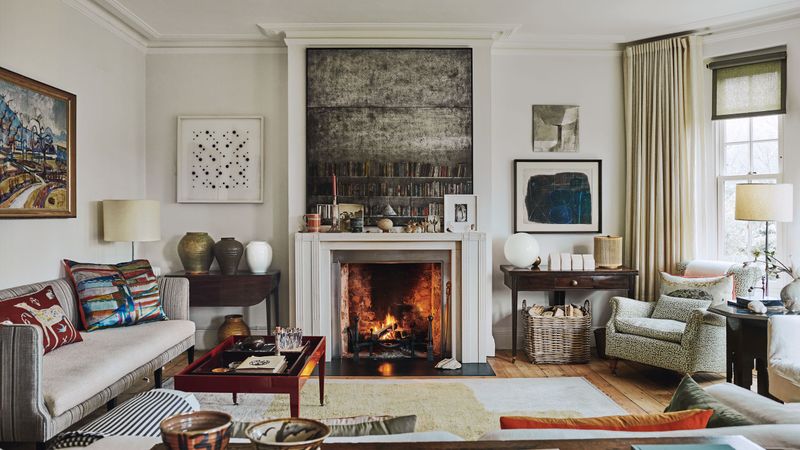
Those heavily themed spaces like cowboy bunkhouses, princess palaces, and sports team shrines are vanishing from Oklahoma City homes. While our state’s proud heritage still influences design, the over-the-top themed rooms that were popular in the early 2000s feel increasingly dated and inflexible.
Oklahoma families have discovered these spaces don’t adapt well as children grow or interests change. The cost of completely redoing a room every few years has pushed parents toward more versatile designs with changeable accents instead of permanent themed features.
Even media rooms are becoming more subtle. Rather than recreating miniature movie theaters with curtained walls and stadium seating, Oklahoma homeowners are creating flexible entertainment spaces that can serve multiple purposes. This practical approach reflects our region’s value of versatility and common sense.
9. Excessive Use of Bright Colors
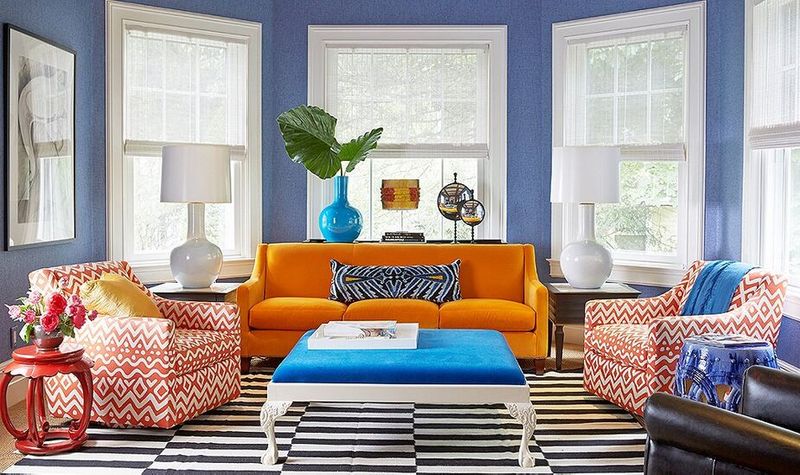
The bold accent walls and brightly colored trim that briefly dominated Oklahoma City homes are rapidly fading away. Those shocking red dining rooms and electric blue kitchens that seemed daring a decade ago now make homes harder to sell in our increasingly competitive market.
Oklahoma’s natural landscape, with its dramatic skies and seasonal changes, provides plenty of color without competing interior hues. Homeowners have discovered that neutral spaces better showcase our famous sunsets and allow seasonal decorating without clashing. The region’s abundant natural light can make bright colors feel overwhelming rather than energizing.
Softer, more natural palettes are taking over, with texture providing interest instead of bold color. This shift mirrors broader design trends toward creating calm, adaptable spaces that serve as retreats from our busy, often stressful world.
10. Large, Closed-Off Kitchens
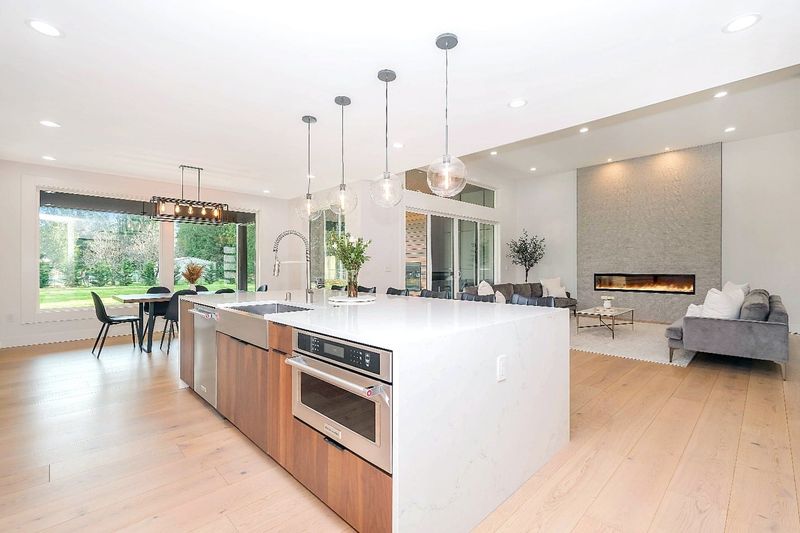
Walls are coming down all across Oklahoma City as the separated, formal kitchen rapidly disappears. Those closed-off cooking spaces that kept food preparation hidden from guests no longer match how local families actually live and entertain.
Oklahoma’s famous hospitality culture means cooking is often part of the social experience. Modern hosts want to chat with guests while preparing meals, not be isolated in a separate room. Parents prefer keeping an eye on children while cooking rather than being completely separated from the family room.
Open-concept designs that connect kitchen, dining and living areas better suit our casual lifestyle. The shift reflects changing social norms and family dynamics, with Oklahoma City homes increasingly designed around how people genuinely interact rather than formal entertaining traditions that rarely happen in real life.
11. Too Many Glass Brick Walls
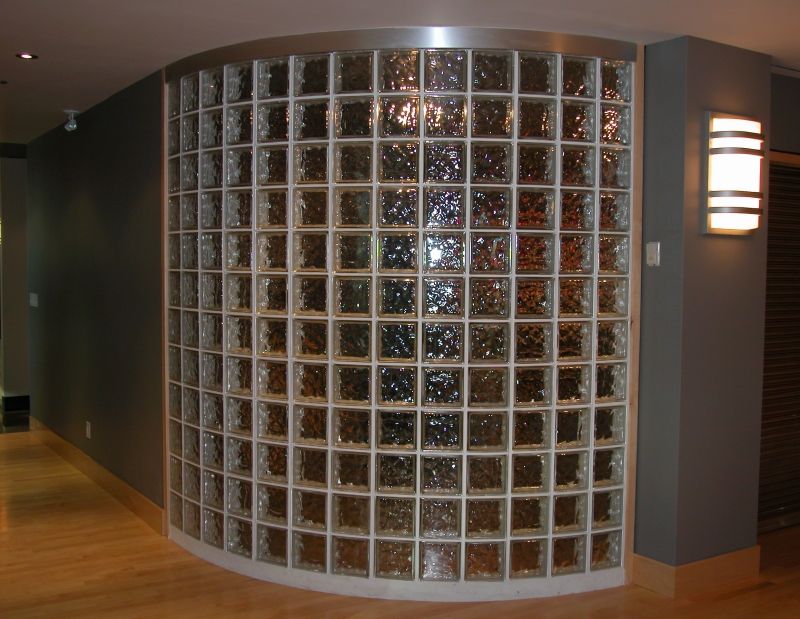
Glass block walls, once considered the height of bathroom luxury in Oklahoma City homes, are being demolished at record rates. Those shimmering translucent dividers that dominated master bathrooms and entryways in the 1980s and 90s now immediately date a home.
Beyond aesthetics, practical concerns drive this change. Oklahoma’s red dust infiltrates the seams between blocks, creating cleaning nightmares. The walls’ hollow nature provides poor insulation against our extreme temperatures, and the distorted light they create makes everyday tasks like applying makeup difficult.
Clear glass shower enclosures and strategically placed windows are replacing these dated features. The change reflects broader trends toward honest materials and natural light in Oklahoma homes, with residents preferring authentic solutions to privacy and light concerns rather than trendy compromises.
12. Busy Wallpaper Patterns
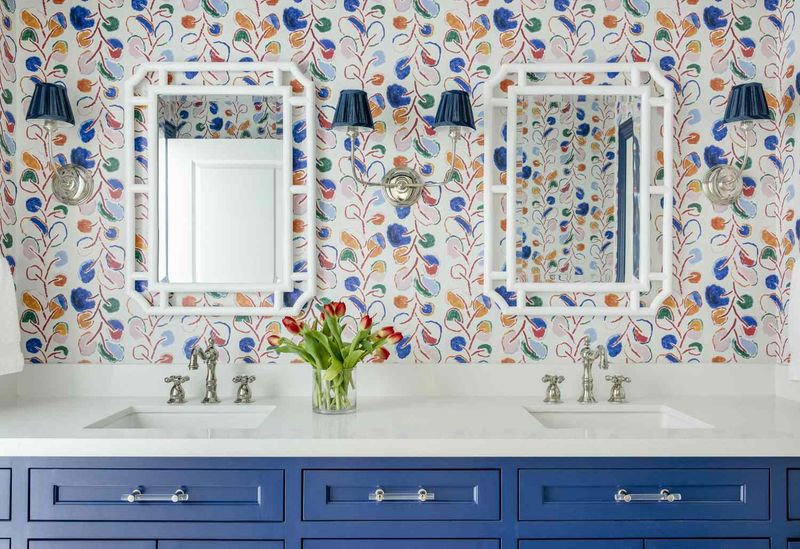
Those busy, small-scale wallpaper patterns that dominated Oklahoma City homes in previous decades are being stripped away at remarkable speed. The tiny floral prints, miniature plaids, and fussy borders that once signaled design sophistication now make spaces feel cluttered and dated.
Oklahoma’s abundant natural light tends to intensify these patterns, making them feel overwhelming rather than charming. The state’s high humidity can also cause these papers to peel at the seams, especially in bathrooms and kitchens where moisture is present.
When wallpaper is used in contemporary Oklahoma homes, it features larger-scale, more subtle patterns that create architectural interest without visual chaos. This shift reflects broader design trends toward creating serene, uncluttered spaces that serve as retreats from our increasingly busy digital lives.
13. Overstuffed Furniture
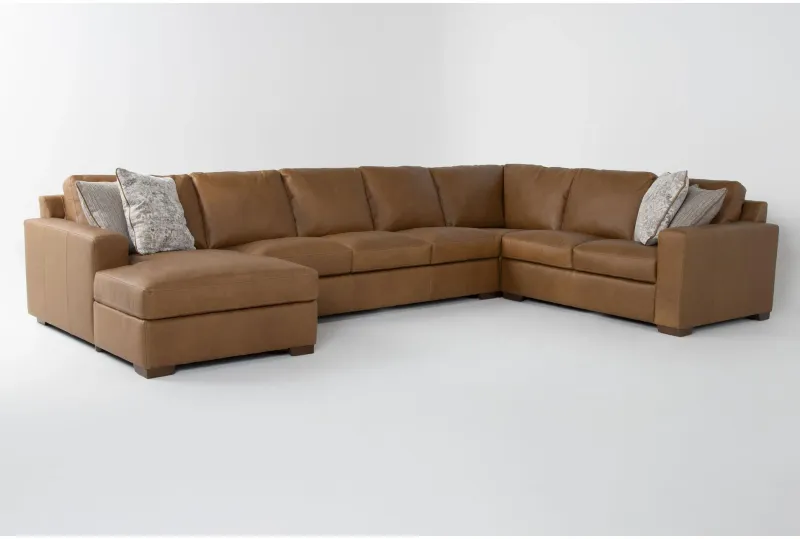
Massive, puffy leather sectionals and oversized recliners are rapidly disappearing from Oklahoma City living rooms. Those enormous furniture pieces that dominated local homes in the early 2000s now make spaces feel smaller and dated rather than comfortable and luxurious.
Our region’s tendency toward smaller, more efficient homes makes these furniture dinosaurs increasingly impractical. Oklahoma’s hot summers have revealed another drawback all that padding and leather means sweaty, uncomfortable seating during our extended hot seasons, even with air conditioning running.
More proportional, versatile pieces are taking their place. The shift reflects changing entertainment habits, with families no longer designing rooms exclusively around television viewing. Today’s Oklahoma City homeowners want flexible spaces that support conversation, reading, gaming and various activities rather than just passive screen time.
14. Clunky Entertainment Centers
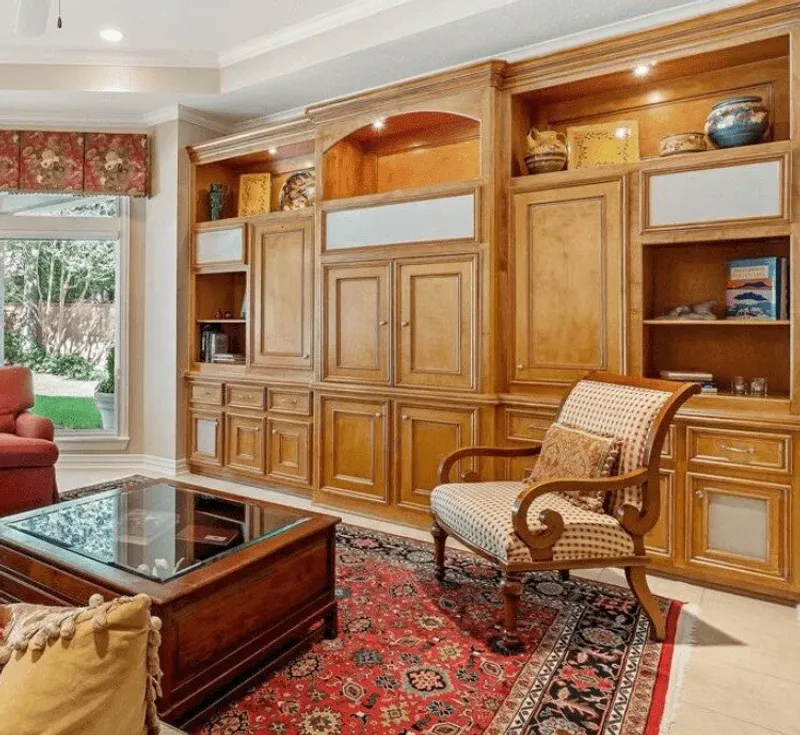
Those massive entertainment centers that once dominated Oklahoma City living rooms are rapidly becoming extinct. The enormous wood cabinets designed to house bulky tube TVs, DVD collections, and stereo equipment now look comically outdated in the streaming era.
Oklahoma’s tendency toward tornadoes and severe weather has made residents increasingly aware of heavy furniture that could pose safety risks. Many local homeowners report removing these pieces after realizing they were primarily used to collect dust and clutter rather than organize frequently used items.
Sleek wall mounts and minimal media consoles are taking their place. This shift reflects our changing relationship with entertainment technology, with Oklahoma families embracing streaming services and digital libraries that don’t require physical storage space for media collections that rarely get touched.

